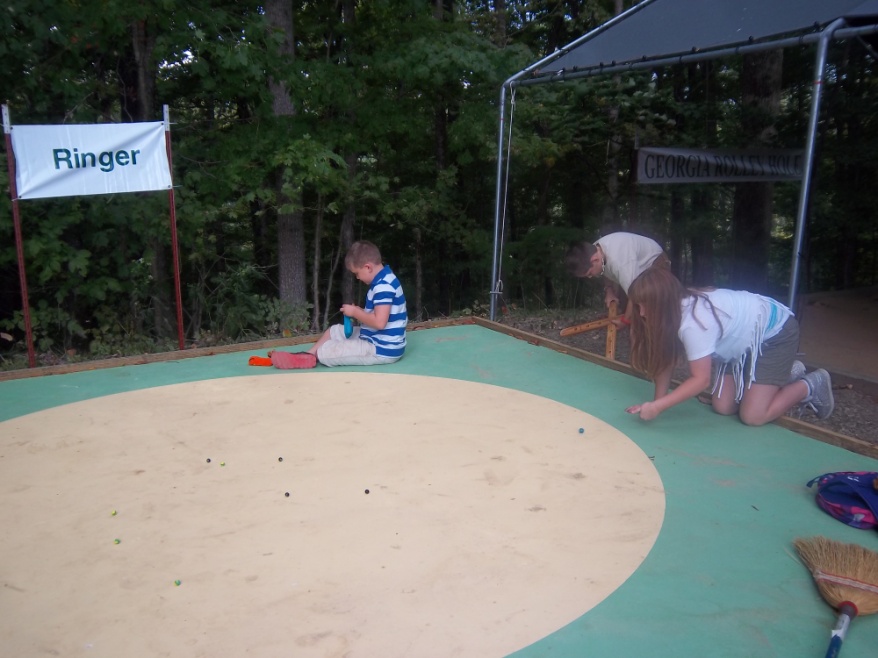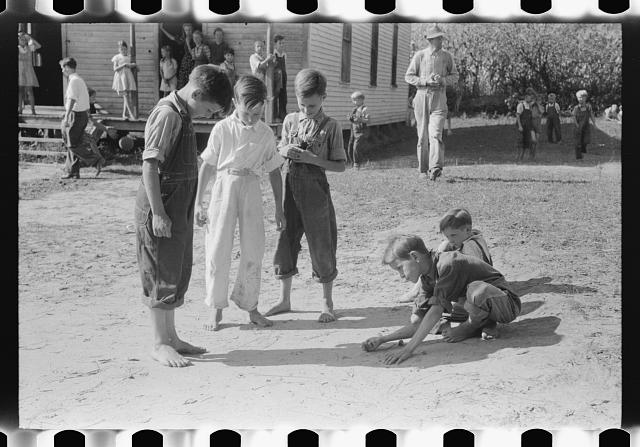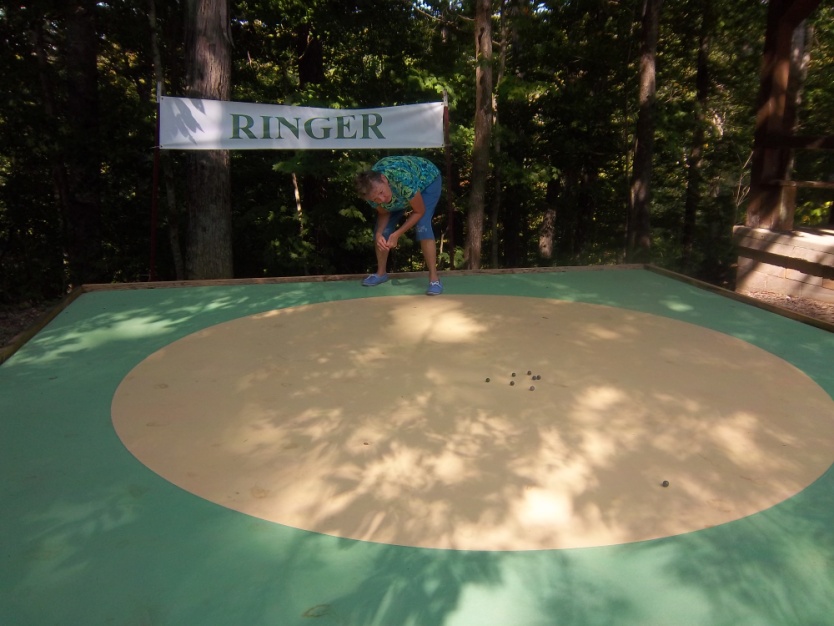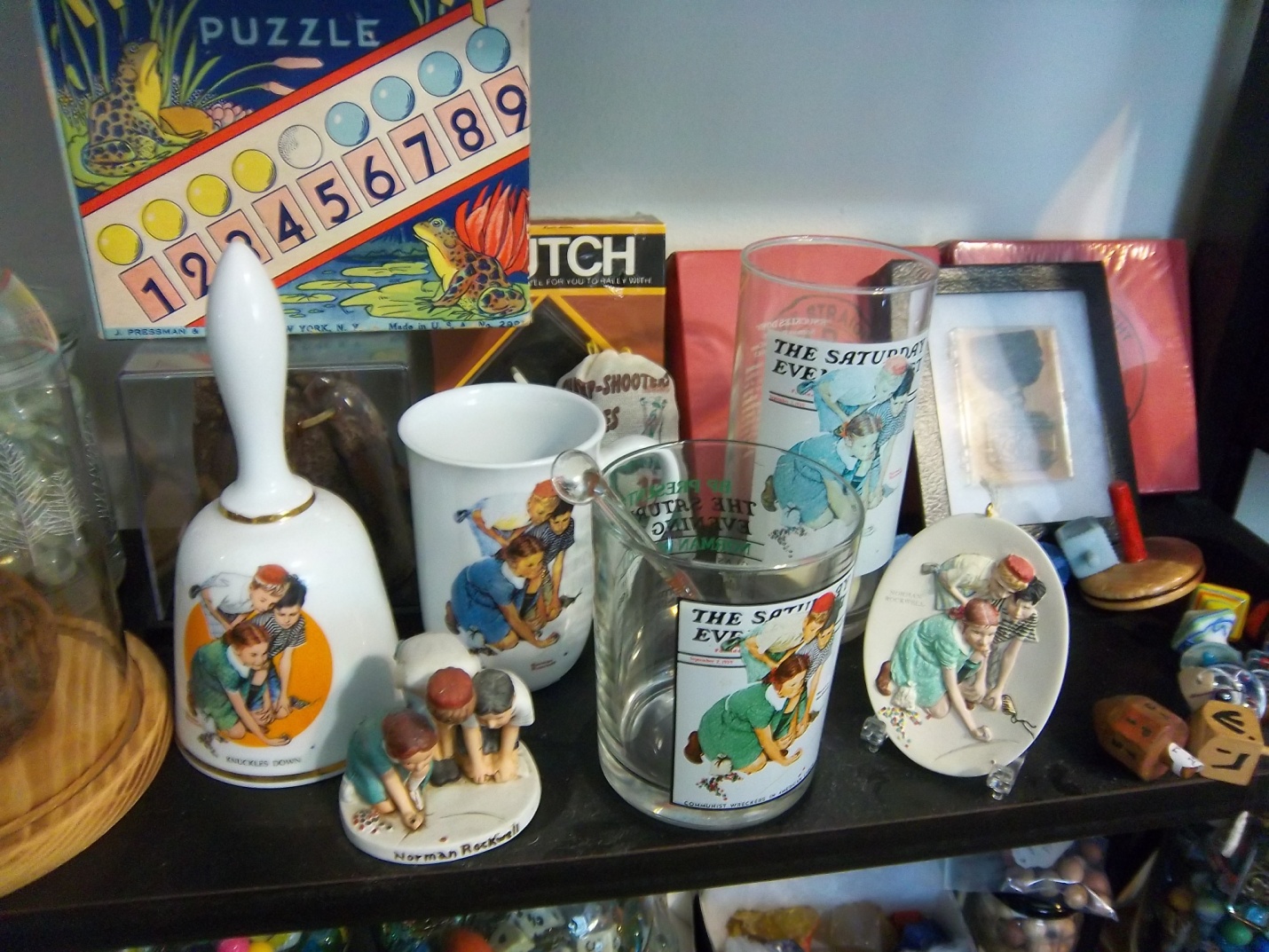
“Boston boys are sore because the girls are playing marbles. Gee whiz, hoaly smoak, paw, isn’t there any limit to sex invasion?” Evening Public Ledger, Philadelphia, PA, March 22, 1922, Night Extra, Page 8.
Their Marble Playing Blazed a Trail for Others
“Hoaly Smoak”!
In recent posts we have noted that we enjoy browsing in the Library of Congress American newspaper archives.[1] When we read these old newspapers, we are reading history while it is still news. We can see, from our vantage point one hundred years and more later, cultural shifts, some seismic in proportion, just taking shape and social trends which have become everyday reality. And some social activities which were popular and well-known at the time are unheard of or forgotten today.
And, when we read the old papers we can see the cadence, the inflection, the regionalism and the biases of the writers. Remember, one hundred years ago papers generally shared stories and there were no or few bylines.
High Strangeness
First, let’s establish that shooting marbles is gender-blind. Little boys have learned over the ages that girls are often extremely dangerous to play against in ringer if you are in any way attached to your aggies.
But, believe it or not, in the late 19th and early 20th centuries playing marbles was a closet activity for girls! When we read “between the lines,” we see that girls were given jump ropes, jacks, and tea sets, but not marbles. For so long in America it was both implied and explicit that girls did not play marbles. While we will never know for certain, we have every reason to believe that this was society’s attitude and message rather than the girls’ themselves.
This from The Seattle Star on Wednesday May 2, 1928 (page 8): “with little girls playing marbles instead of dolls, posterity may find it hard to get raised.” Actually, 1928 seems a bit late for this type sentiment since by this time girls were already active in school and locally-sponsored marble tournaments all across America.
Bumping into the Glass Ceiling: Pink Toes & Miggles
“Boys have taken to skipping ropes, and we may any day expect to see girls playing marbles, in assertion of the rights of their down trodden [sic] sex.” The Wheeling Daily Register, Wheeling, WV March 25, 1873, Image 4
Still the trail from the closet to the sunshine and the marble ring was often circuitous. We would believe that this next story is a prank had we found it on today’s social media, but we read the same story in newspapers nation-wide.
Forest City Press October 19, 1911 (Image 4). Forest City, South Dakota Dateline (no byline) Cincinnati and Special: “Has new cure for Flat Footed Girls Playing Marbles with Toes will Give you Fair Feet, Says Professor. The girls at the University of Cincinnati are going to learn to play marbles with their little pink toes this winter. …Their athletic instructor…will teach the fair students to pick up marbles with their toes. This exercise is a fine preventive and cure for flat feet and is calculated too to raise the arch of the instep to the height so much desired.”
Miggles?
Just a bit creepy? Little pink toes and a cure for flat feet? Marbles? University of Cincinnati was started in 1819 and today there are some 44,000 enrolled in a number of highly rated programs. And, incidentally, the first woman to receive a degree at the University was Winona Lee Hawthorne and she graduated there in 1878.
We wrote about social trends in the introduction. We would have believed that the notion of women playing marbles with their toes would not have extended beyond Ohio if not for this next story. It is from The Breckenridge News, Cloverport, Kentucky, January 3, 1912. Cloverport is only about 125 miles southwest of Cincinnati. Remember, newspapers routinely “exchanged” stories.
“To obtain the ‘foot beautiful’ a bevy of Chicago girls has formed a club for playing marbles with the toes, and it has been named the Miggles club.” They met in the members’ homes and “…they are becoming expert players, it is said.”
The Collins English Dictionary explains that the word miggle, which we had never heard before, is first recorded in the period 1890 -1895. It means the game of marbles or a marble not used as a shooter. So in 1912 the Chicago women can’t shoot marbles, but they can miggle!
A Light is Dawning

Ok, miggles and flat feet aside, it was slowly dawning on parents, teachers, and boys all across America that “Yes, Virginia, girls can play marbles!” And if you have grown attached to your taw you better not challenge them to a game of “keepsies” in the ring.
Girls and jump rope comes up again in 1903. Check this April 28, 1903, story from the Corvalis Gazette, Corvalis, Benton County, Oregon. “The love of rope-skipping by little girls shows the love of activity inherent in every child. “ But, explains the author, there is a reason why girls love jump rope. “Girls, from their anatomical construction, cannot use their arms and shoulders for athletic exercise as boys do. The most natural development for them is through the lower limbs.”
Right. Now we understand it! It all boils down to girls’ “anatomical construction.” But the author goes on to explain that girls don’t like competition and that is the real reason they play jacks alone. Boys, however, love competition! The author, whom we imagine is male, goes on the say that “…there is no reason why [girls] could not learn to play marbles if they wanted to.” Wanted to? What about were allowed to?
Girls and Boys Are Different
Of course, there are physiological differences between male and female athletes. But check out this report from 2017: “…yes, females have a lower relative strength when it comes to upper body movements but this doesn’t mean they should avoid upper body strength training. In fact, it means this should be a key area of focus in order to help them build the requisite upper body strength and live a healthy, injury-free life.” [2]
All this makes us think of girl’s underhanded fastball. Ever watched girls play softball? At about ten years old a pitcher can throw, on average, about 40 mph; at eighteen an average speed is nearly 70 mph! It was reported recently that a female pitcher hit 83 mph! Underhanded!
But really, just how much upper body strength is needed to shoot a marble accurately into and across a ring? We won’t even consider whether or not girls are competitive!
This “Primitive Country”[3]
Sometimes a “primitive country” is much more enlightened that nearby “civilization”. Let’s travel to Kentucky in the early 1900s to illustrate our point. There were about 160 people living in Sandy Hook, Kentucky, in 1907[4].

The little town, established in the early 19th century and named for a “fishhook” bend in the Little Sandy River, is the seat of Elliott County.
The following report was sent to the Bismarck Tribune, Bismarck, North Dakota by an Associated Press reporter in Sandy Hook. It was published on May 30, 1907, and it reads in part: “…incredulous as it may seem, the most popular form of amusement for all classes of people in Sandy Hook is playing marbles; men, women and children alike dotting the public square here today, engaged in the game. Bowling, tennis and croquet have not reached this primitive country, and it is an ordinary thing to see a girl of 16 playing marbles on the public square with a man of 60. …It is nothing for an aged grandsire to pick out an agate at a distance of thirty feet.”
The AP was started in 1846 and it has won 56 Pulitzer Prizes. We have no idea why one of their reporters found himself in Sandy Hook in 1907. But we are sure that he got this right: everyone playing marbles on the town square together is an ordinary thing. We propose that it would be good for both the American heart and soul if it could be done more often today.
Playing for Keeps
We have no doubt that the girls in Sandy Hook always played for keeps. After all, what exactly is the point of “funsies” or “for fair”? Still, it took a little longer for the idea to reach “civilization.” The Evening World (New York) datelines Boston on March 17, 1922. “On the sidewalks since signs of spring appeared, passersby, forced to detour to the curbing, have found girls almost as numerous as boys in the games. The sisters play “for keeps,” too, and often with a skill that has sent their brothers home marbleless. As a result, the girls also, nowadays, go home with hands soiled and knees muddied, and mothers find cause to lament the trend of the times.”
While we are not sure that “marbleless” is really a word, we do know that this was no trend. Girls playing “down and dirty for keeps” was the result of a long and winding road. Girls always knew that they could play smart. If given only half a chance they could both outsmart and outshoot many of the boys. We have a feeling that the boys had long known this could happen. Can you even imagine the degradation and humiliation of showing up in the clubhouse and having to tell the boys that Kathleen Ann had yet again cleaned your clock?
The Light Dawns

Jo lines up her shot in the Ringer Tournament on 17 September 2016 at the 34th Anniversary National Rolley Hole Championship at Standing Stone State Park in Hilham, Tennessee. It was all for naught. A nine year old girl gave Jo a thrashing in record time. Possibly the shortest round ever recorded in tournament ringer play! But, on the bright side, Jo says she had a brand new experience and she had a great time!
The Time Has Come
We have written in this post that it took a long time for girls to change the social norms enough that they can now compete in marble games and tournaments against all comers. Here is what we learned was happening by 1923 in the larger cities. On March 15 The Indianapolis Times[5] asked:
“’’Now Who is Marble Champ?’ This paper will give a bicycle to winner of the City Contest—and that isn’t all,
scores of Indianapolis boys and girls today had their best ‘taws’ in shape and were practicing for the preliminary rounds of The Times marble contest to be held during spring vacation week at various school houses. Winners of the school games will take part in the city championship tourney. The city champion will be awarded a fine double-barred motor bike type of bicycle. Besides this, the city champion will be entered in a district tournament to determine the champion of a number of middle Western cities. The district champion will be sent to Atlantic City with one of his or her parents to participate in the national championship. TheTimes will pay all expenses.”
What’s Your Game?
“The official game is ‘ringer.’ It is easy to play If you are used to playing marbles. It was chosen because it will he the official game of the national tournament and the games must he uniform. Rules of the game will be reprinted from time to time in The Times. Every boy and girl under 15 in Indianapolis is eligible to enter.” (Italics added)
We are unsure what a “double-barred motor bike type of bicycle” is and we wonder who won the city tournament in 1923. But regardless of winners and losers, the stage was set. The doors were opened. And there was no going back.
Girls played marbles with the boys and with other girls and they got just as grubby as the boys always had. This was, after all, the Golden Age of American marbles. All the way through World War II marbles were a staple. And girls played marble bagatelle with hand-held games and table-top pinball. And they often won. Regardless of how large or small a role they played, marbles were important in helping girls establish and then keep their rightful roles in the social order.
“The question isn’t who is going to let me, it’s who is going to stop me.” Ayn Rand (Alice O’Connor)
- https://chroniclingamerica.loc.gov/ American newspapers from every state & from 1777 to 1963. “Chronicling America (ISSN 2475-2703) is a Website providing access to information about historic newspapers and select digitized newspaper pages, and is produced by the National Digital Newspaper Program (NDNP). NDNP, a partnership between the National Endowment for the Humanities (NEH) and the Library of Congress (LC), is a long-term effort to develop an Internet-based, searchable database of U.S. newspapers with descriptive information and select digitization of historic pages. “ ↑
- https://plt4m.com/blog/train-female-athletes/ 12/18/2022 ↑
- “Mountain children playing marbles after school in Breathitt County, Kentucky”. Wolcott, Marion Post, 1910-1990, photographer. Library of Congress, Prints & Photographs Division, FSA/OWI Collection, [reproduction number, e.g., LC-USF34-9058-C] ↑
- https://population.us/ky/sandy-hook/ 12/19/2022 ↑(Indianapolis [Ind.]) 1922-1965, March 15, 1923, Home Edition, Image 2. https://chroniclingamerica.loc.gov/lccn/sn82015313/1923-03-15/ed-1/seq-2/
- ↑


